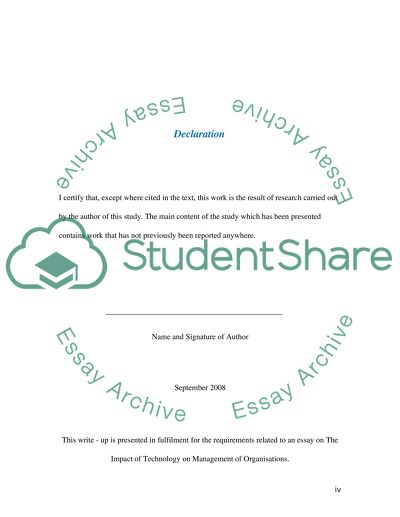Cite this document
(“Contemporary Management Practice (with IT focus) - Assignment 2 Essay”, n.d.)
Contemporary Management Practice (with IT focus) - Assignment 2 Essay. Retrieved from https://studentshare.org/miscellaneous/1547865-contemporary-management-practice-with-it-focus-assignment-2
Contemporary Management Practice (with IT focus) - Assignment 2 Essay. Retrieved from https://studentshare.org/miscellaneous/1547865-contemporary-management-practice-with-it-focus-assignment-2
(Contemporary Management Practice (with IT Focus) - Assignment 2 Essay)
Contemporary Management Practice (with IT Focus) - Assignment 2 Essay. https://studentshare.org/miscellaneous/1547865-contemporary-management-practice-with-it-focus-assignment-2.
Contemporary Management Practice (with IT Focus) - Assignment 2 Essay. https://studentshare.org/miscellaneous/1547865-contemporary-management-practice-with-it-focus-assignment-2.
“Contemporary Management Practice (with IT Focus) - Assignment 2 Essay”, n.d. https://studentshare.org/miscellaneous/1547865-contemporary-management-practice-with-it-focus-assignment-2.


